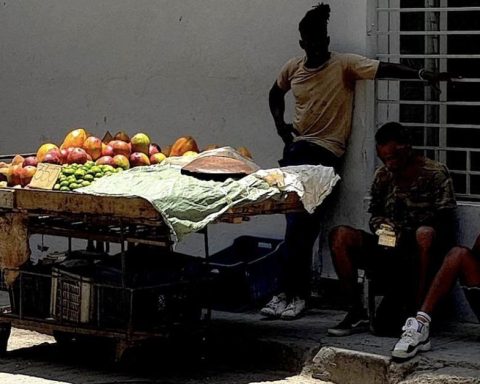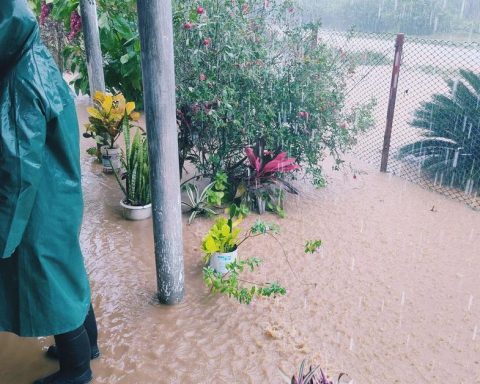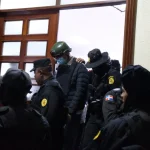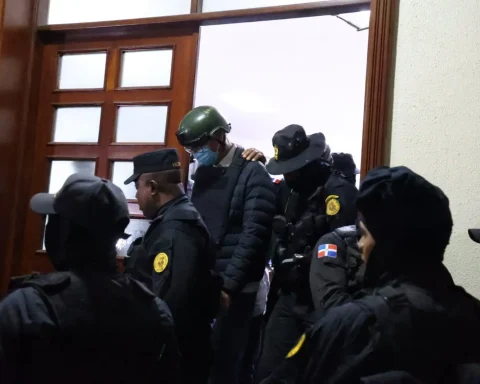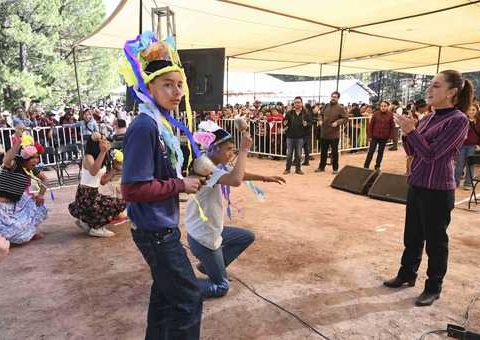
Raspadura, jam, salt and tamales are the foods that the authorities they plan deliver to the victims of Granma, the province most affected by the torrential rains of recent days. The eastern zone tries to raise its head after the loss of human lives, landslides and precarious evacuation processes.
The numbers offer a bleak picture: 237 houses affected, among which there are 49 total collapses and 22 partial ones, in addition to 25 roofless buildings. The “evaluation” of the damage continues, although 1,055 “minor effects” have already been recorded, including the onslaught of flooding on buildings under construction, roads and other public structures.
In the face of any delay, the local government heals: “The recovery process has its moments”, so no one should expect the situation to improve in the short term. There is, they assured, cement and zinc tiles for the victims, but it was not clarified how or where the delivery will be made, and if the labor is borne by those affected.
There is, they assured, cement and zinc tiles for the victims, but it was not clarified how or where the delivery will be made, and if the labor is borne by those affected.
The business unit of the Niquero Food Industry promised, according to the local press, to march at full speed to guarantee some food to the province, although it clarified that they are “light” and some preserves. The list is minimal: “mango jam, tomato puree, seasoned salt, condiments, raspadura, tamales and others”, which, in principle, will only be distributed in the towns of Aguacate and El Aeropuerto. Both towns, reports the newspaper The Demajaguawere isolated after the floods, so supplies have had to reach the territory by sea.
As in Niquero, the state companies of Bartolomé Masó also promised help to the most affected towns. But they can offer little: puree, stir-fry, and liqueurs, but nothing of the most necessary foods, such as meat, rice, or beans. There will also be jam, they assured, but this will depend on the “packaging capacity” and whether they have sugar at the time of production.
Some 600 hectares of rice were ruined by the downpours. Now, the farmers try to drain the water to carry out a “quick harvest of the grain”. Other crops, such as corn and sunflower, were also devastated.
Cows in the province will not be able to meet the goal of 4,000 liters of milk per day. Ranchers have found it impossible to milk the cows, which produce far less after the inconvenience of evacuation.
As for bread, in the province, they say, “experiment” with “extender” products – corn and pumpkin – but, due to the “high costs of vegetables”, production is only in the test phase. Another of the big problems, after the uselessness of the roads, has been the transport of raw materials. The solution?: the “mular transport”.
The scenario in Las Tunas, another of the provinces most damaged by the weather, is less gloomy but also serious.
The scenario in Las Tunas, another of the provinces most damaged by the weather, is less bleak but also serious: 82 homes in poor condition, 14 homeless, 26 partial collapses and four total collapses. In addition, a nursing home lost its roof, although a “new” one with zinc sheets has already been installed. Technicians from the Etecsa telephone monopoly and the Unión Eléctrica are working to repair 375 kilometers of damaged highways, in addition to seven bridges – two for trains and four for embankments. Some 17 latrines, reports the local press, were collapsed.
The objects lost by the victims were many, he assures newspaper 26: “Mattresses, refrigerators, televisions, fans, kit kitchen, hygiene, food modules, water tanks, sets of sheets and bedspreads”, which the authorities promise “to replace as far as possible”.
Added to this is the damage to 1,175 hectares of crops, and the loss of 302 tons of plantains, cassava, sweet potatoes, corn, beans, and vegetables. However, the figure that the official press raises as a “success” –following the pattern of the national since the rains began– are the 118 million cubic meters of water in the reservoirs: they are “one hundred percent of their capacity total”, celebrates the newspaper.
________________________
Collaborate with our work:
The team of 14ymedio He is committed to doing serious journalism that reflects the reality of deep Cuba. Thank you for accompanying us on this long road. We invite you to continue supporting us, but this time becoming a member of our newspaper. Together we can continue transforming journalism in Cuba.




